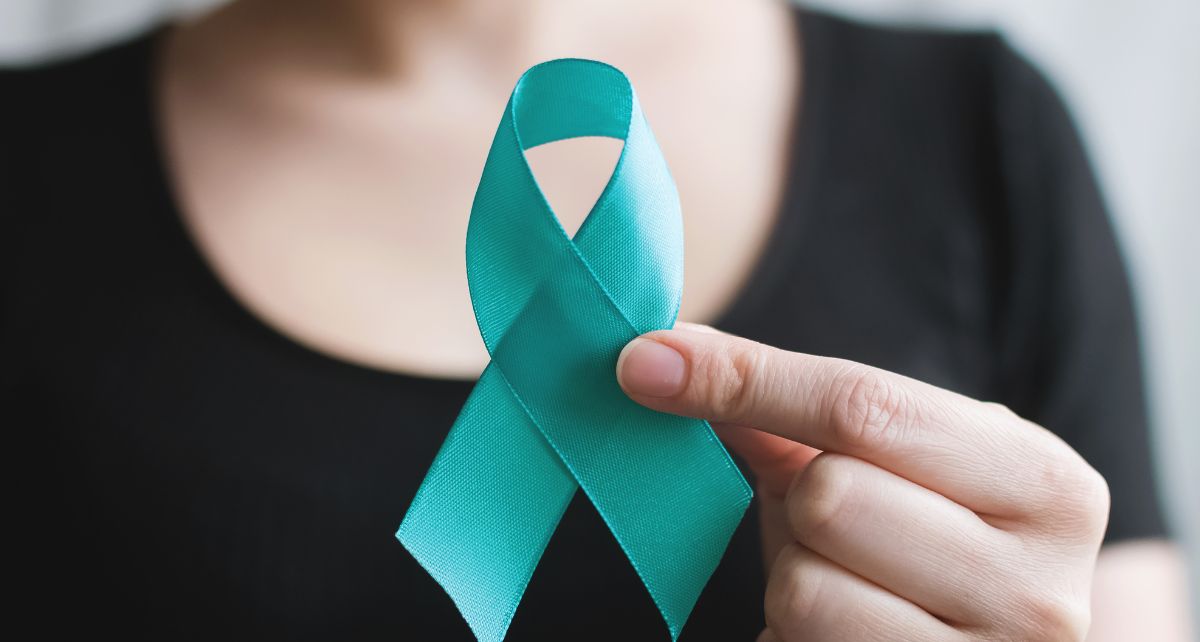September is Ovarian Cancer Awareness Month—a crucial time to focus on a silent, yet serious, threat that most often flies under the radar.
Ovarian cancer is notoriously difficult to detect because its symptoms can be subtle, easily dismissed as everyday discomforts. Understanding the signs and advocating for your health can make all the difference in early detection and treatment.
Let's take a closer look at what ovarian cancer is and what red flags you should look for in its detection. Most importantly, we'll dig into ovarian cancer prevention, what to do if you suspect you have ovarian cancer and how to advocate for yourself at the doctor's office. Remember, knowledge is power, and your voice is your strongest ally.
What is Ovarian Cancer?
Ovarian cancer occurs in the ovaries, the reproductive glands that sit on either side of the uterus. These glands do more than store eggs (ovum) for pregnancy; they also produce the hormones estrogen, progesterone, and androgens.
When cells in the ovaries grow uncontrollably and form tumors, ovarian cancer develops. It's worth noting that one form of ovarian cancer actually begins in the fallopian tubes, further complicating detection and diagnosis.
How Common is Ovarian Cancer?
According to the American Cancer Society, one in 87 people with ovaries will develop ovarian cancer. In Canada, that number is slightly higher at one in 68.
The risk increases if you have a family history of ovarian cancer, meaning you could be genetically predisposed to it. A family history of breast, colon, uterine, and pancreatic cancers also heightens your risk.
For some, genetic screening for the BRCA gene mutation, which looks for DNA changes that indicate a higher risk of developing these cancers, is a proactive step. Additionally, having Lynch Syndrome or a family history of it further increases your risk.
While ovarian cancer most commonly affects postmenopausal individuals and those with a history of endometriosis, it’s important to remember that it can strike anyone with ovaries, regardless of age.
Ovarian Cancer Symptoms and Red Flags
One of the most frustrating aspects of diagnosing ovarian cancer is that its symptoms are often vague or easily attributed to less serious conditions. However, there are specific signs you should pay close attention to, especially if they appear suddenly or persist without explanation.
While symptoms can vary from person to person, they generally fall into two categories: more common symptoms and less common symptoms.
More common symptoms include:
- Persistent bloating and abdominal swelling
- Feeling full even when eating less
- Unexplained weight loss
- A frequent or urgent need to urinate
- Bleeding after menopause
Less common symptoms include:
- Changes to your menstrual cycle, including vaginal discharge or bleeding between periods
- Discomfort or pain during sex
- Unusual fatigue
- Lower back pain
- Indigestion, such as upset stomach, constipation, or heartburn
How Can You Reduce the Risk of Ovarian Cancer?
It’s important to understand that regular pap smears are used to detect abnormal cells related to cervical cancer—not ovarian cancer. Similarly, the HPV vaccine, while crucial for preventing certain cancers, does not protect against ovarian cancer.
One of the most effective ways to reduce your risk of ovarian cancer is to quit smoking, as smoking increases the risk of many types of cancer, including ovarian cancer.
Recently, in Canadian medicine, doctors have begun recommending that women who do not wish to have children or are finished having children consider having their fallopian tubes removed if they are undergoing other pelvic or abdominal surgery, such as a hysterectomy or tubal ligation.
Since the most lethal form of ovarian cancer often begins in the fallopian tubes, removing them during surgery—known as opportunistic salpingectomy—can be a preventative measure.
What to Do if You Suspect You Have Ovarian Cancer
If you suspect you might have ovarian cancer, it’s essential to track your symptoms and take proactive steps to protect your health. Listen to your body. If something feels off, don’t ignore it—get it checked out.
The National Ovarian Cancer Coalition in the United States offers a symptom tracker, a valuable tool that can help you monitor your symptoms and provide your doctor with specific, detailed information about your concerns.
If ovarian cancer is suspected, your doctor will likely perform a pelvic exam to check for enlarged ovaries or changes in your vagina, uterus, bladder, and rectum. This exam is typically followed by a blood test and an ultrasound to investigate any abnormalities further.
Remember, while regular pap smears are vital for your overall reproductive health, they do not detect ovarian cancer. Stay informed, know the signs, trust your instincts, and never hesitate to advocate for yourself. Your life is worth it.
Resources:
OVCARE: VGH + UBC Ovarian Cancer global ovarian cancer research leader
Loyala Medicine. Blog post: Why Ovarian Cancer Symptoms are Easily Missed
